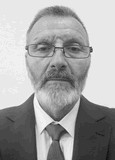Tests and criteria for assessing the anaerobic workability of sprinter athletes
Ключевые слова:
sprint, sprint performance criteria, bicycle ergometry, maximum anaerobic power, maximum running speed.Аннотация
Objective of the study was to evaluate the effect of multiple maximum power exercises on the anaerobic performance of sprinters.
Methods and structure of the study. The experiment involved 11 sprinters of qualification Candidate for Master of Sports and I category. To assess anaerobic performance in the laboratory, athletes underwent repeated bicycle ergometric tests in the test of maximum anaerobic power (MAP). In the field, to study the dynamics of speed in sprinting, the subjects completed a ten-fold run of a distance of 60 m from a low start at full strength after 1 min of rest.
Results and conclusions. The maximum speed in sprinting is reached at the sixth second from the start. During this time, oxidative processes in the tissues practically do not have time to unfold to a significant extent. This time is not enough for a significant increase in anaerobic glycolysis in working muscles. The energy supply of maximum muscle activity in these first 5-6 seconds is carried out mainly due to the alactic anaerobic process, that is, due to the breakdown of intramuscular reserves of organophosphorus compounds ATP and creatine phosphate. At the same time, as a result of multiple repetitions of maximum power exercises, a very strong acidification of the intramuscular environment occurred, which led to a decrease in the leading criteria for sprint performance.
Библиографические ссылки
Abalakov M.V. Novaya apparatura dlya izucheniya sportivnoy tekhniki [New Ekuipment for the study of sports Ekuipment]. Moscow: Fizkultura i Sport publ., 1960. 188 p.
Andris E.R. Upravleniye trenirovkoy v bege na 100 metrov [Managing the 100m run]. Tashkent: Meditsina publ., 1990. 111 p.
Volkov N.I. Biokhimicheskiy kontrol v sporte: problemy i perspektivy [Biochemical control in sports: problems and prospects]. Teoriya i praktika fizicheskoy kultury. 1975. No. 11. pp. 28-37.
Samborsky A.G., Samborsky A.A. Sovremennyye instrumentalnyye i kompyuternyye tekhnologii otsenki skorostno-silovykh sposobnostey sportsmenov [Modern instrumental and computer technologies for assessing the speed-strength abilities of athletes]. Teoriya i praktika fizicheskoy kultury. 2004. No. 11. pp. 11-12.
Hill A., Long C., Lipton H. Muscular exercise, lactic acid, and the supply and utilization of oxygen. Proc. Hoy. Soc. 1924. Ser. 96. p. 438; Ser. 97. p. 84, 155.
Hill A.V., Lipton H. Muscular exercise, lactic acid, and the supply and utilization of oxygen. Q.J. Med. 1923. No. 16. pp. 135-171.
Henry F., Trafton I. The velocity curve of sprint running with some observstions on muscle viscosity factor. Res. Quart. Amer. Ass. Health. Phys. Educ. 1951. No. 1. pp. 409-422.
Sahlin K. Effect of Acidosis on Energy Metabolism and Force Generation in Skeletan Muscle. Biochemistry of Exercise: Proceedings of the Fifth International Symposium on the Biochemistry of Exercise, June 1-5, 1982, Boston, Massachusetts. pp. 151-160.

Дополнительные файлы
Опубликован
Как цитировать
Выпуск
Раздел
Лицензия

Это произведение доступно по лицензии Creative Commons «Attribution» («Атрибуция») 4.0 Всемирная.
